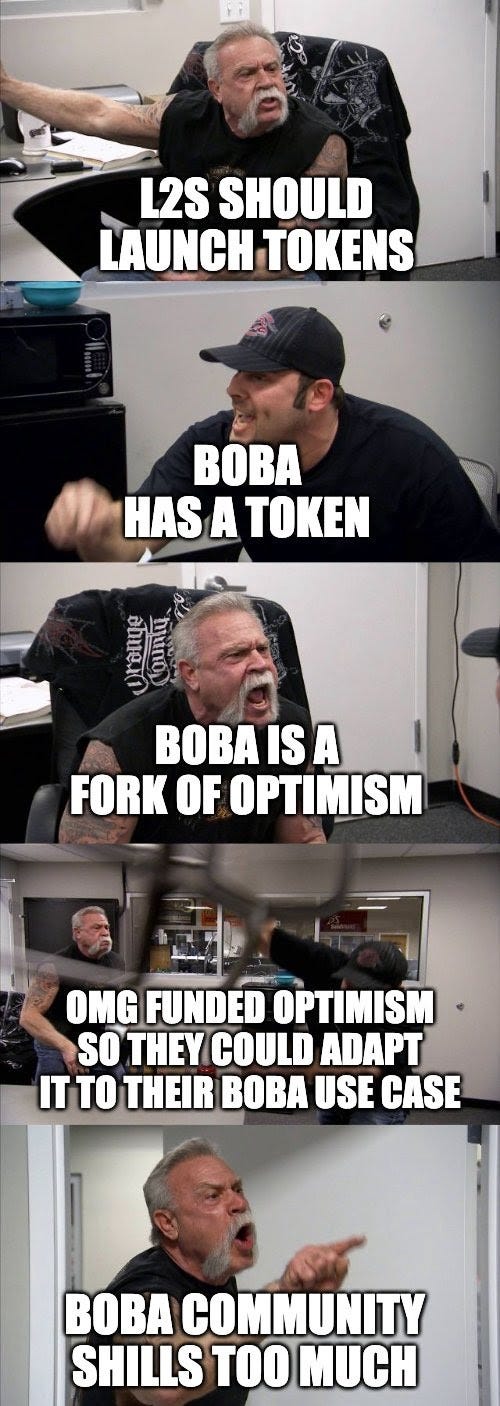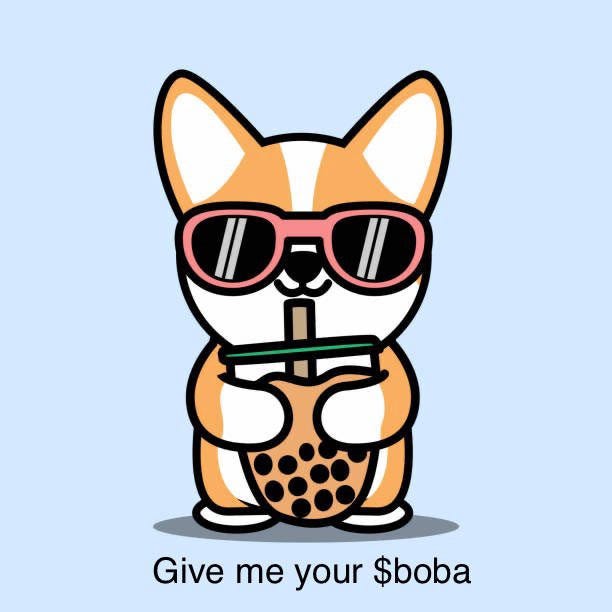What’s the Tea on Boba Network?
The rising gas fees on the Ethereum network has prompted many developers to launch Layer 2 protocols
Excerpt from our Momentum 6 Alpha Leaks call with Small Cap Scientist:
@SmallCapScience is Bullish on $BOBA in the long term:
Very easy to build on with many good devs and projects building on there
Community of investors with diamond hands
Sushi team is working with them
Loves that $BOBA captures ETH fees and distributes it to holders
The rising gas fees on the Ethereum network has prompted many developers to launch Layer 2 protocols. Boba Network is one of the latest additions to the growing list of Layer 2 protocols created on top of the Ethereum network. Other projects that seek to address Ethereum’s scalability issues include Polygon, zkSync, Arbitrum, Optimism, and StarkWare.
What is Boba Network?
Boba Network is a Layer 2 Optimism Rollup scaling solution that is built on Ethereum. Boba is a creation of Enya, OMG Foundation’s core contributor, and is built on Optimism’s codebase. It implements Optimism’s ZK Rollup technology and offers various innovative solutions such as fast exit, swap-based on-ramp, and cross-chain bridging.
Boba Network’s vision is to offer affordability to NFT and DeFi dApps on Ethereum, especially for microtransactions that are very common in the gaming world.
Boba’s Special Features
Hybrid computing. Lack of cross-chain compatibility has been one of the most significant challenges in the blockchain. Boba Network allows Ethereum developers to run various codes on web-scale infrastructure like AWS Lambda and implement complicated algorithms that are impractically impossible to run on-chain.
Fast exit. Users can now comfortably transfer money in and out of the Boba Network in a short span of time with community-driven liquidity pools. It can take 45 minutes to 3 hours, unlike conventional L2 solutions, where it can take up to 7 days.
NFT Bridging. Users can now mint, move and sell various NFTs between Layer 1s and Layer 2s or even between different Level 2s easily. This feature makes the development of GameFi and NFT, in general, more convenient and easier.
Secured by Ethereum. Boba Network inherits Ethereum’s security as it is an Optimistic Rollup Layer 2. This network will be secure as long as Ethereum maintains its security.
Save Gas. According to the official website, transactions on this network cost less than a $BOBA.
$BOBA Token
$BOBA is the governance token on the Boba Network. The token was created to support the network and it can be staked to earn rewards on the network. As it is part of OMG Foundation, holders of $OMG tokens who had bridged their tokens to Boba Network by the snapshot date were airdropped with $BOBA on a 1:1 basis.
As a governance token for Boba DAO, the coin is used to decide on community direction and future initiatives for the network. Every holder of $BOBA gets one vote for every token staked on the network. Token holders are eligible to vote, submit proposals, and delegate votes on proposals based on community guidelines.
As of this writing, the token is trading at $6.26. The total circulation is capped at 500,000,000 $BOBA coins. The coin is already trading on various exchanges such as FTX, Bybit, Gate.io, ZT, and BigONE.
Team
OMG Foundation
OMG Foundation is an NGO that is dedicated to expanding and growing the Ethereum ecosystem and consequently encompassing as many developers as possible in a bid to bring the Web 3 movement into reality.
Enya
According to its official website, Enya is “a leading developer of decentralized infrastructure solutions that are designed for the next 1 billion users”. It was founded by Stanford faculty and alumni to become a pioneer of decentralized privacy. It is a provider of multiparty computation services and is used by more than 10 million users across different countries. Alan Chiu is Enya’s founder and CEO.
Competition
Boba Network already has some competitors that seek to address Ethereum’s scalability issues. Let us go through some of the notable L2 protocols:
Polygon
Formerly known as MATIC, Polygon claims to combine the best of Ethereum and other sovereign blockchains into a fully-fledged system that is multi-chain. Some of the pain points that it addresses are low speeds and high gas fees without sacrificing security.
zkSync
Guided by the motto, ‘rely on math not validators’, zkSync claims to solve Ethereum’s scalability issues without compromising on security. The protocol believes that DeFi should grow without limit and has no upper limit on the value it can handle.
Arbitrum
Arbitrum is a next-generation L2 for Ethereum Decentralized Apps. Arbitrum allows people to use their favorite tools to scale their dApps at lower costs.
Optimism
This protocol goes with the tagline “Ethereum at lower costs and lightning speeds”. With Optimism, users can also use their favorite apps such as Uniswap, Lyra, and Synthetix, to mention a few.
Wrap Up
Layer 2 solutions have received much attention in the past few months, and several protocols have been created. However, Boba Network is the only L2 solution with a DAO and a token within the Optimism Rollup solutions.
Withdrawal waiting time has been a challenge, and Boba claims that it is the only L2 solution that reduces it to a few minutes. Since Boba is still relatively new, we can only wait and see how it will transform this space.










